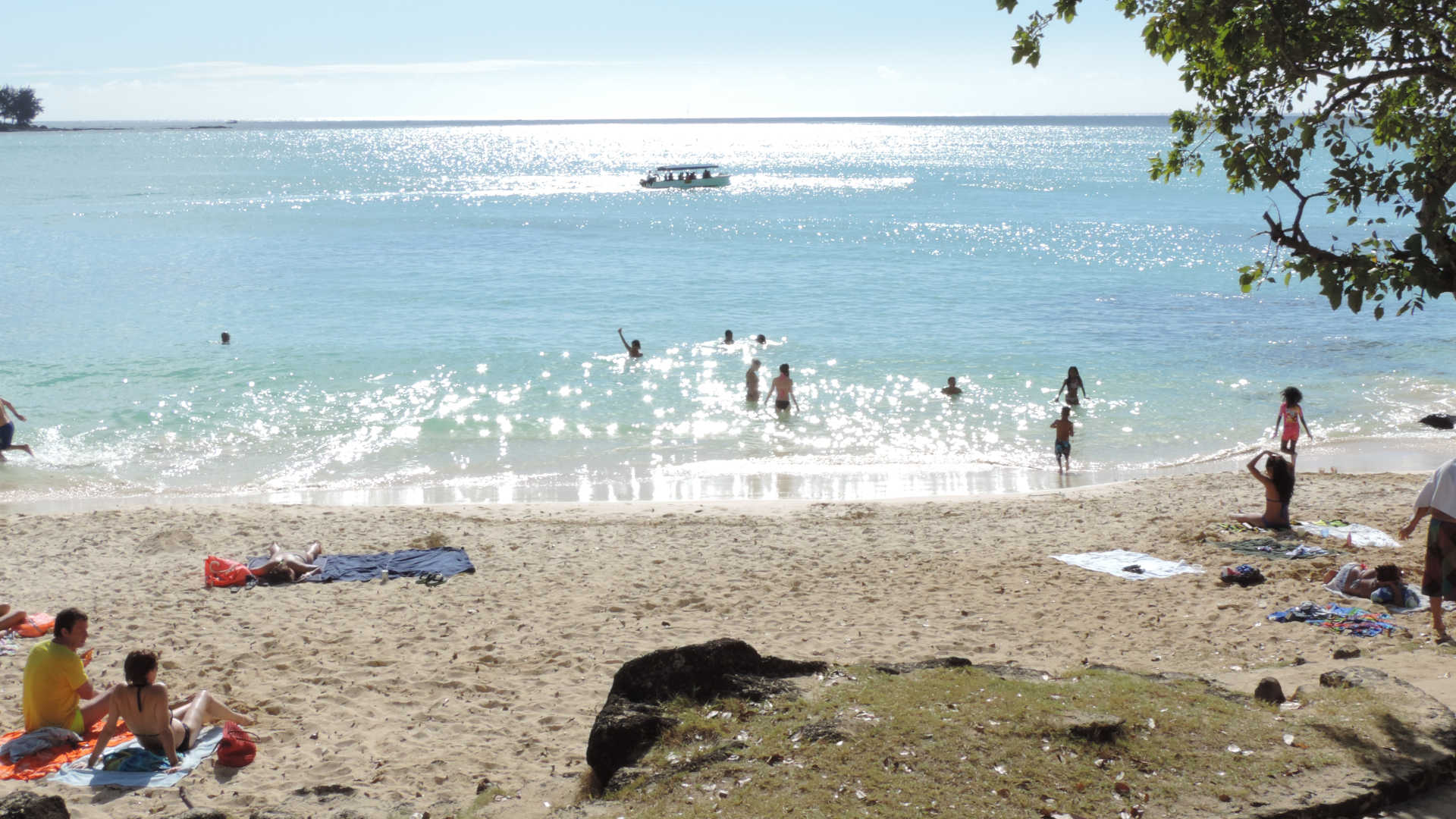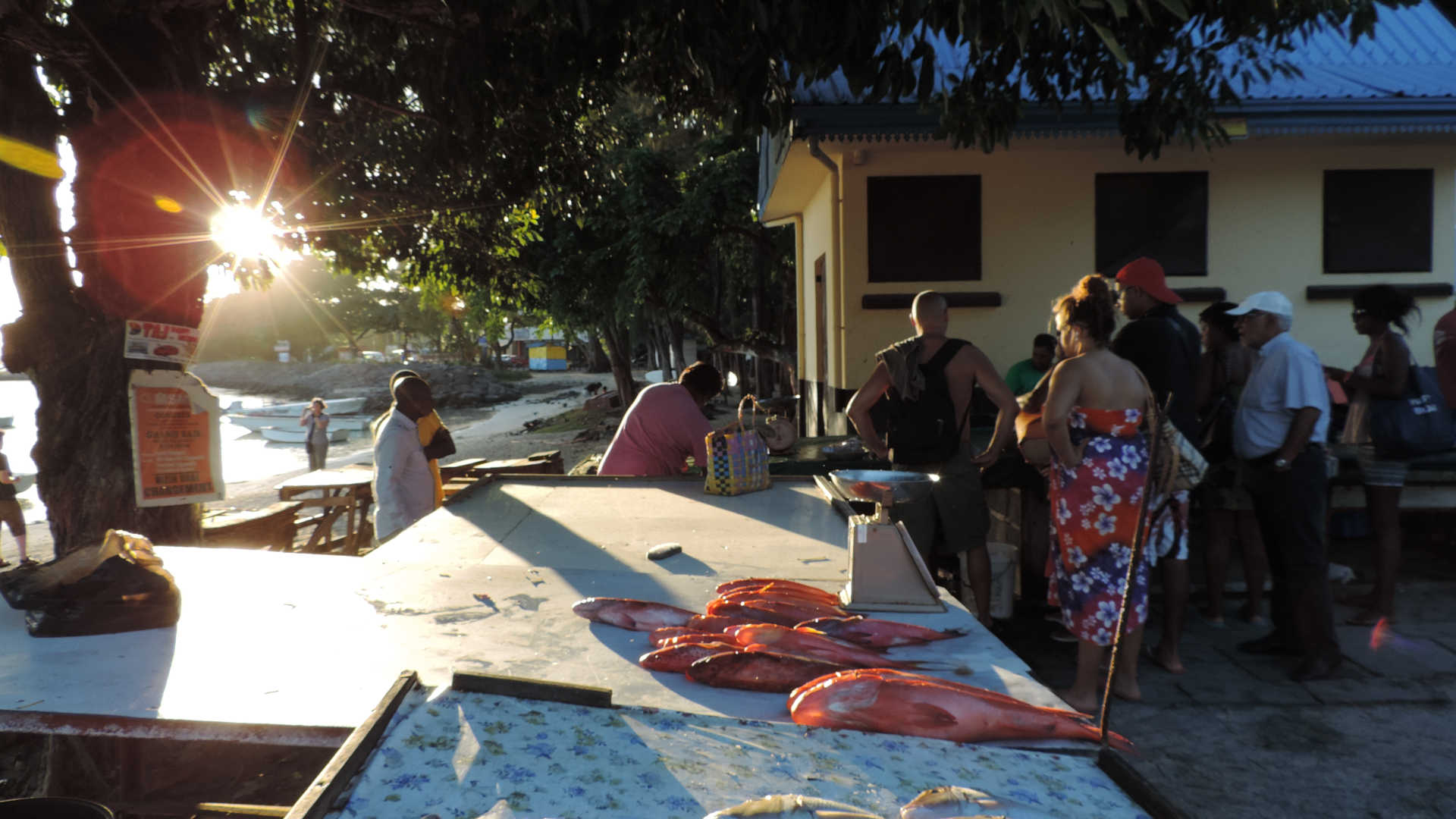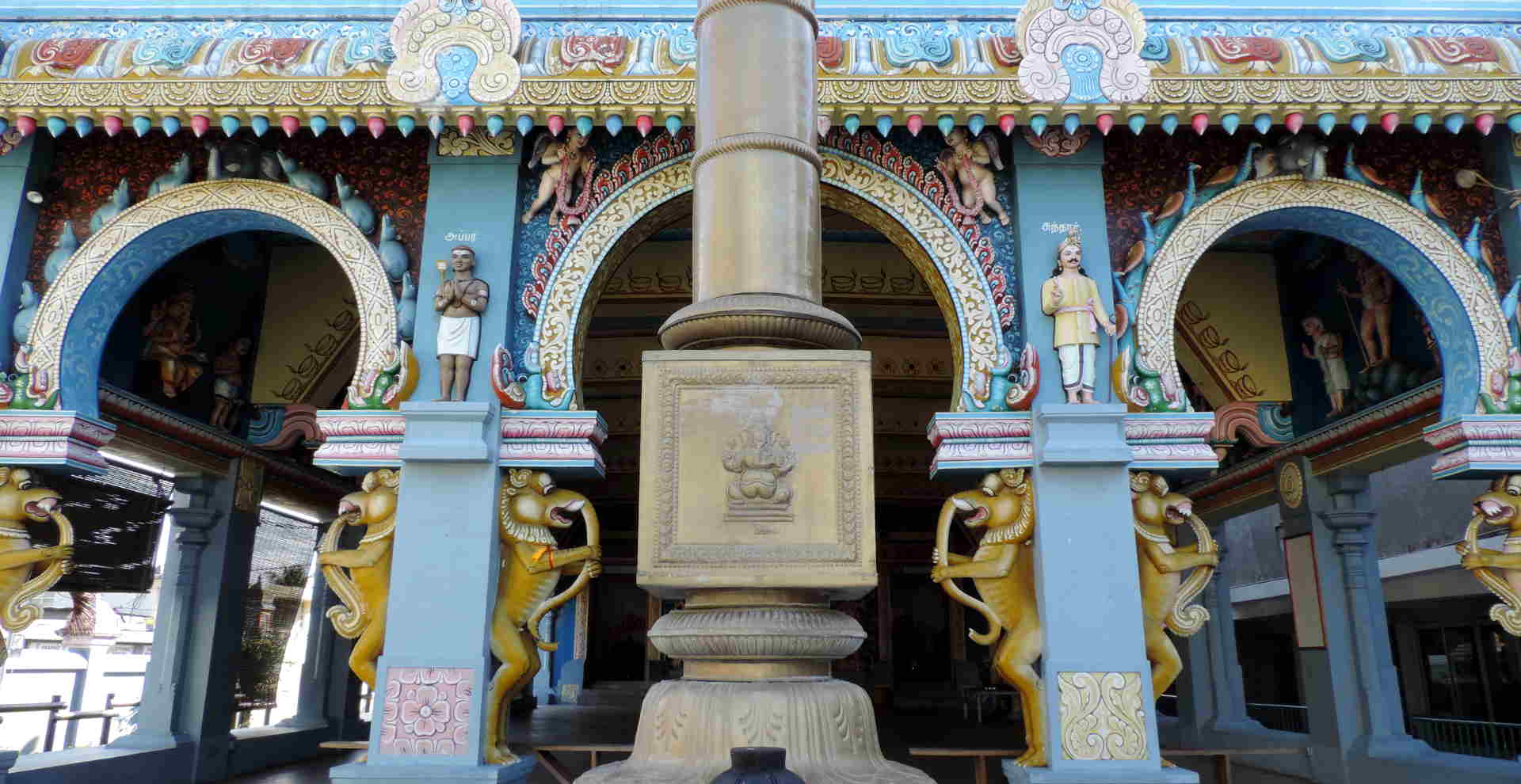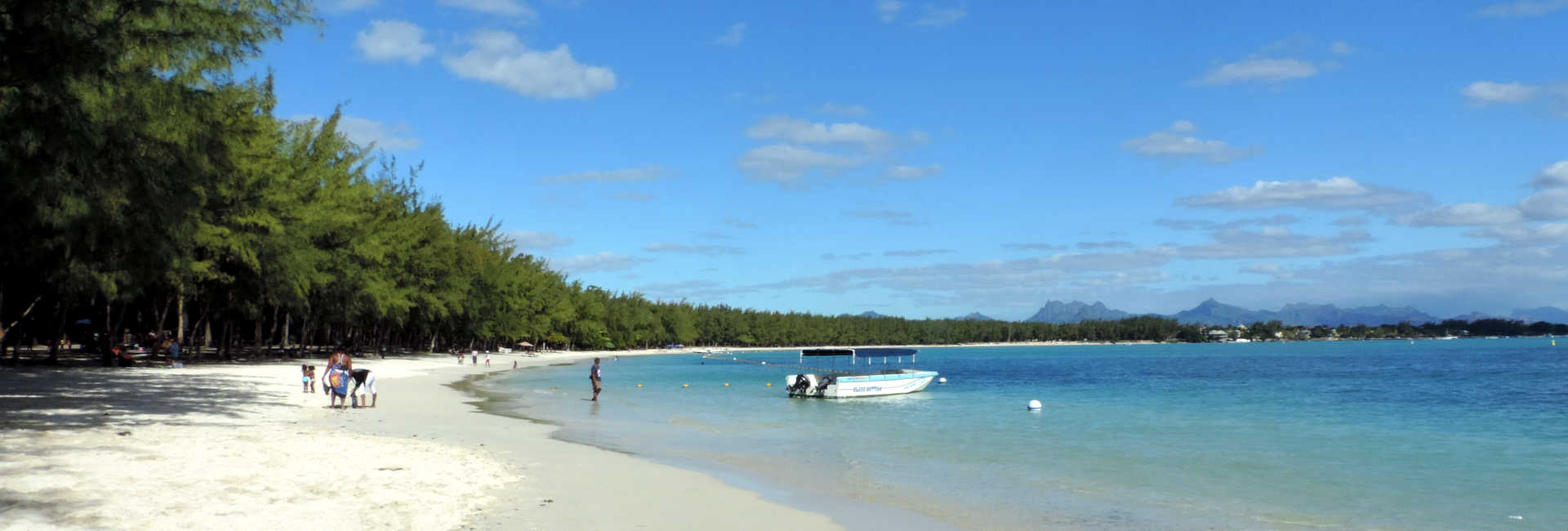Grand Baie (from its original French name but “Grand Bay” is generally accepted), is somewhere between an immature village and a grown-up town. Its name conceptualises a mother-like protection; a haven harbouring sailors from around the world as well as an important expat. community.
The most cosmopolitan place of Mauritius, this El-Dorado of leisure has also adopted many Mauritians from other regions; those with the convenient smile. A different type of people from the natives Grand Baie in its original version and their kind indifference, preserving the overall civility.

When smaller and younger, Grand-Baie was a set of 4 distinct quarters. The Hindus were on the East end, the Muslims at the South, the Creole quarter was in-between those two at the actual centre, while the Tamils were at the Western edge, towards Pointe-aux-Canonniers.
Although fairly recent, its sun-drenched, lazy early days are definitely part of the past; Grand Baie grew too fast, just like a young adult realising that childhood is way behind. An indolence lost for ever, in the name of an intrepid adolescence, for the sake of business.
Grand Baie is a real melting-pot; saucy and spicy. Abused, it is hosting the highest concentration of shops, shopping malls, restaurants, bars and clubs. Add to the recipe even more stalls, immobile caravans and food outlets on “tricycles” appreciated by the locals and tourists alike.
The neighbouring lagoons and beaches are among the most beautiful of the island, their different shades of Blues “cherried” by the islets in the open sea. This beauty is best discovered while walking along the beaches. Being mostly private, they are accessible only at specific points.

– The landing and sale of fresh fish in afternoons, (as from 4.00 pm) and the ambiance along the main beach at sunset and dawn.

– Next are the numerous food stalls on “wheeless” tricycles proposing Indian specialities such as “pharatas” and “rotees”. Whether they have or had 2, 3 or 4 wheels, these are always referred to as “Trisik” (tricycles). There was once an advert in the newspapers titled: “For sale: 4-wheeled tricycle”…
– These tricycles are integrated into Grand Baie’s décor. They do not contribute to the beauty of the place but to its exotic folklore. The salted pastries are all tasty and somehow spicy but only the regular consumers will be able to tell which merchant serves the better ones… if ever there is a difference as many are from the same family, with the exact same supply.

– The fruits with or without chilli sauce are probably a softer way of tasting local specialities.
– The alternatives proposed are the more recent permanent and officially authorised stalls under the trees. Some serve better food than others but they all compose the holiday atmosphere that prevails.
– Opposite the mosque, the Saint-Anges-Gardiens chapel was inaugurated in 1959 when it was of an absolute futurist style. The architect, Mr. Jacques Desmarais considered the importance of fishing for the people of Grand-Baie, thus the building represents a “pirogue” pointing to the sky with full sails set. Even today and despite a small extension, viewed from some angles, it has kept its futurist and “flying” character. On Fridays, the chapels parking is put at the disposal of the Muslims going to the mosque across the road.

– The Tamil temple is open to visitors almost all day long, it is in an almost unreal world just behind its door. Initially built of tin in the 50’s this concrete version is restored yearly.
According to the keeper, those works are so precise that they can only be made by Indian workers. A specialised team of painters and cleaners are thus flown to Mauritius every year to repaint clean and repair the hundreds of statues and 3D ornaments carved and slotted into the concrete.

– The Mont-Choisy beach – One of the greatest and most popular public beaches of the island. So much so that it is busy on week days and crowded on weekends. A privilege spot for admiring sunsets.
Sundays are very animated, noisy and folkloric owing to the amount of families spending the day, children playing happily, ice-cream vans and their endless chime and especially the sound systems playing loud in cars, the ultimate success symbol of the Mauritian society.
Setback from the beach, is a monument in memory of brave aviators. Its on this plain, formerly a horse-racing track counting far less trees, on the 10th of September 1933, that the first two aeroplanes coming from overseas, landed in Mauritius. On board were Maurice Samat and Paul-Louis Lemerle who took-off from the airport of Reunion island, which later became the Roland Garros airport, named after the island-born famous French aviator.

On the 10th of November 1933, Paul-Louis Lemerle repeated the feat, this time with Jean Hilly, first Mauritius-born to fly his own aircraft between the two islands, bringing the first “air-mail” to Mauritius. The trio Samat, Lemerle & Hilly did a few more flights until the 4th of October 1934 when Jean Hilly, flying from Reunion to Mauritius with two passengers, never reached Mauritius. Fate manifesting in series, Paul-Louis Lemerle, taking off on the 2nd of November 1934 with a plane full of flowers with the intent of dropping them into the ocean in between the two islands as a tribute to his mate, also disappeared somewhere in the ocean…
There are a few other interesting stops to make in and around Grand-Baie which you will hopefully discover if you look and ask around. By the way, asking is an end in itself as it allows interactions and chats with local people who remain the destination’s most valuable asset.


